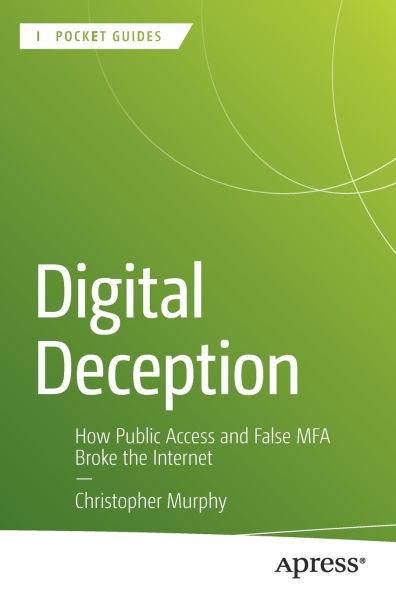Divided into well-structured chapters that trace the evolution of these issues, Digital Deception provides a clear and fact-based narrative that highlights where the system went wrong and why. It also shines a light on the complicity of various actors (vendors, auditors, corporate leaders, and even educational institutions) in perpetuating a broken system. More than just a critique, "Digital Deception" offers a path forward, rooted in real computer science, to restore trust and security in our digital world.
The book is especially relevant now, as cyber threats continue to grow in scale and sophistication. The facts presented here are not only essential for cybersecurity professionals but also for corporate leaders, policymakers, and anyone interested in the integrity of the digital economy.
What You Will Learn:
• Gain a deep understanding of the fundamental flaw in cybersecurity, particularly the impact of public access to secure networks and the deception inherent in current MFA practices.
• Recognize how various actors, knowingly or unknowingly, have contributed to the current cybersecurity crisis.
• Implement real solutions with actionable strategies based on real computer science to address and correct these vulnerabilities, paving the way for a more secure digital future.
• A revolutionary concept of Direct User Interaction and Digital IDs, as opposed to more traditional cybersecurity approaches like Zero Trust or perimeter security.
Who This Book Is for:
This book is primarily written for cybersecurity professionals, corporate leaders, lawyers and policymakers. It is also relevant to educators in the field of cybersecurity, and anyone interested in the integrity of the internet.
The typical reader will have a basic understanding of cybersecurity but will be introduced to new concepts and facts that challenge conventional wisdom and encourage a rethinking of current practices.
Divided into well-structured chapters that trace the evolution of these issues, Digital Deception provides a clear and fact-based narrative that highlights where the system went wrong and why. It also shines a light on the complicity of various actors (vendors, auditors, corporate leaders, and even educational institutions) in perpetuating a broken system. More than just a critique, "Digital Deception" offers a path forward, rooted in real computer science, to restore trust and security in our digital world.
The book is especially relevant now, as cyber threats continue to grow in scale and sophistication. The facts presented here are not only essential for cybersecurity professionals but also for corporate leaders, policymakers, and anyone interested in the integrity of the digital economy.
What You Will Learn:
• Gain a deep understanding of the fundamental flaw in cybersecurity, particularly the impact of public access to secure networks and the deception inherent in current MFA practices.
• Recognize how various actors, knowingly or unknowingly, have contributed to the current cybersecurity crisis.
• Implement real solutions with actionable strategies based on real computer science to address and correct these vulnerabilities, paving the way for a more secure digital future.
• A revolutionary concept of Direct User Interaction and Digital IDs, as opposed to more traditional cybersecurity approaches like Zero Trust or perimeter security.
Who This Book Is for:
This book is primarily written for cybersecurity professionals, corporate leaders, lawyers and policymakers. It is also relevant to educators in the field of cybersecurity, and anyone interested in the integrity of the internet.
The typical reader will have a basic understanding of cybersecurity but will be introduced to new concepts and facts that challenge conventional wisdom and encourage a rethinking of current practices.

Digital Deception: How Public Access and False MFA Broke the Internet
127
Digital Deception: How Public Access and False MFA Broke the Internet
127Paperback(First Edition)

